Well, I thought I was done writing about scroll saws. I really had nothing else to say, unless I was presented with an opportunity to use someone else’s saw to cut a similar puzzle. However, I received a couple of comments about blade movement that I ended up delving farther into. These comments were about how the Pegas and similar saws can be adjusted to make blade movement almost go away.
That really troubled me, as the geometry of the short arms moving through an arc is going to make for more blade movement fore and aft on the saw than the longer arms of the parallel arm saws. I found this video by Steve Good of the Scrollsaw Workshop. It is a good video about the DeWalt specifically and worth watching.
So, I decided to measure the amount of actual movement of my own DeWalt saw. I have a set up gauge with a magnetic mount. I placed a small steel rule in the blade clamps to ensure that any flexing of the blade did not contaminate the results.
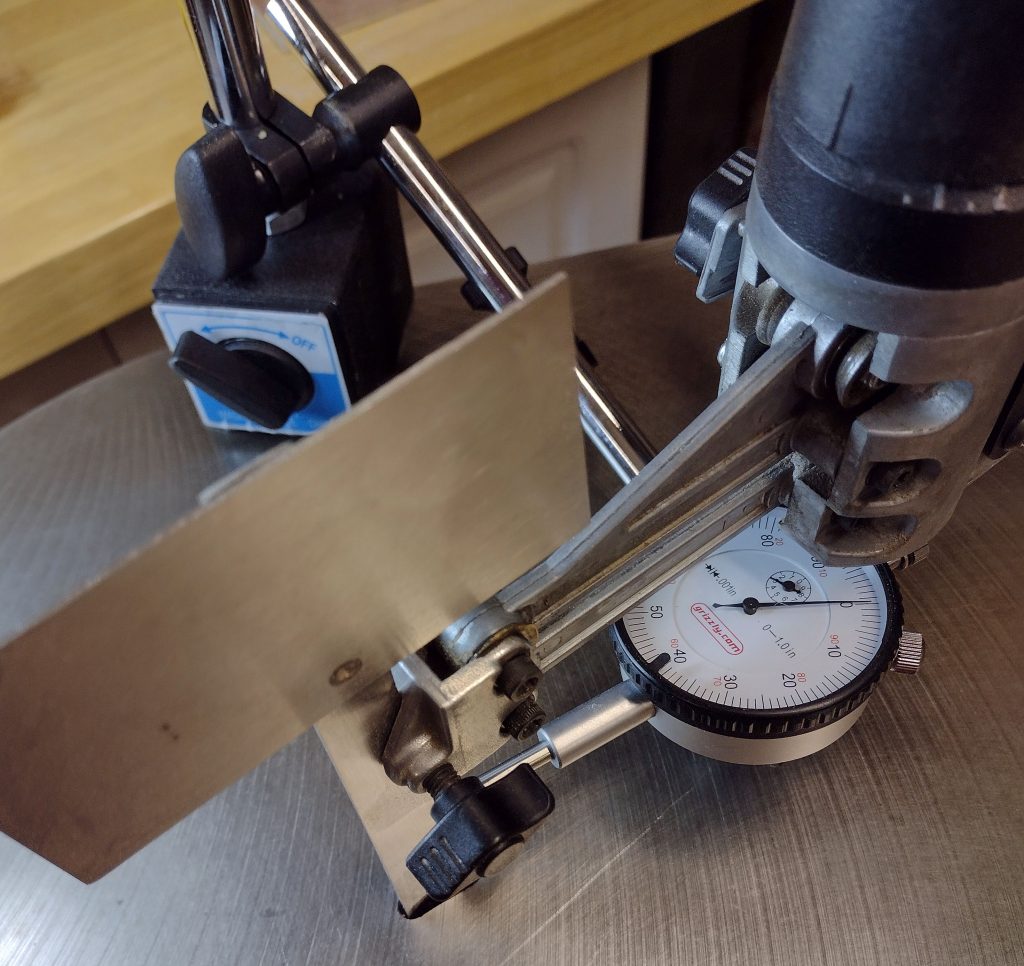
Next, I used a screwdriver to manually turn the saw motor to slowly move the pivot arms.
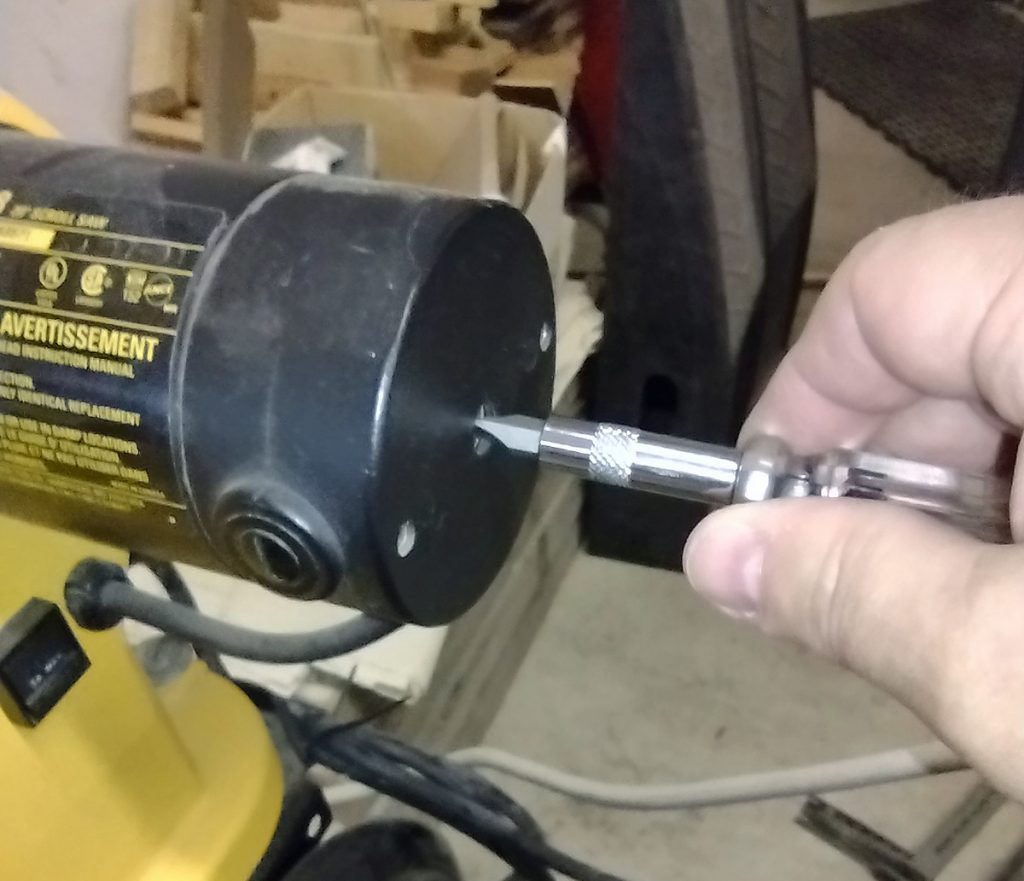
Next, I moved the motor to one extreme of blade movement, and zeroed out the gauge.
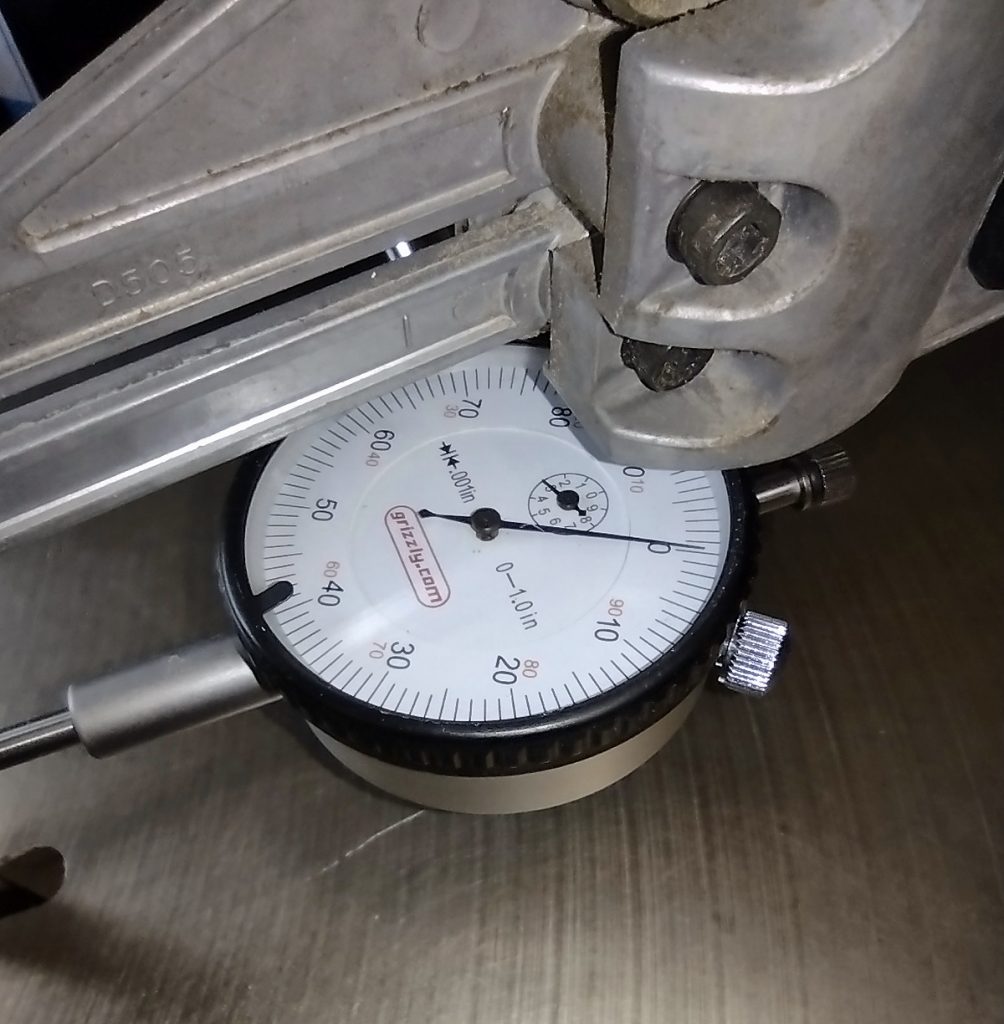
Then, I rotated the motor to determine the maximum amount of blade deflection.
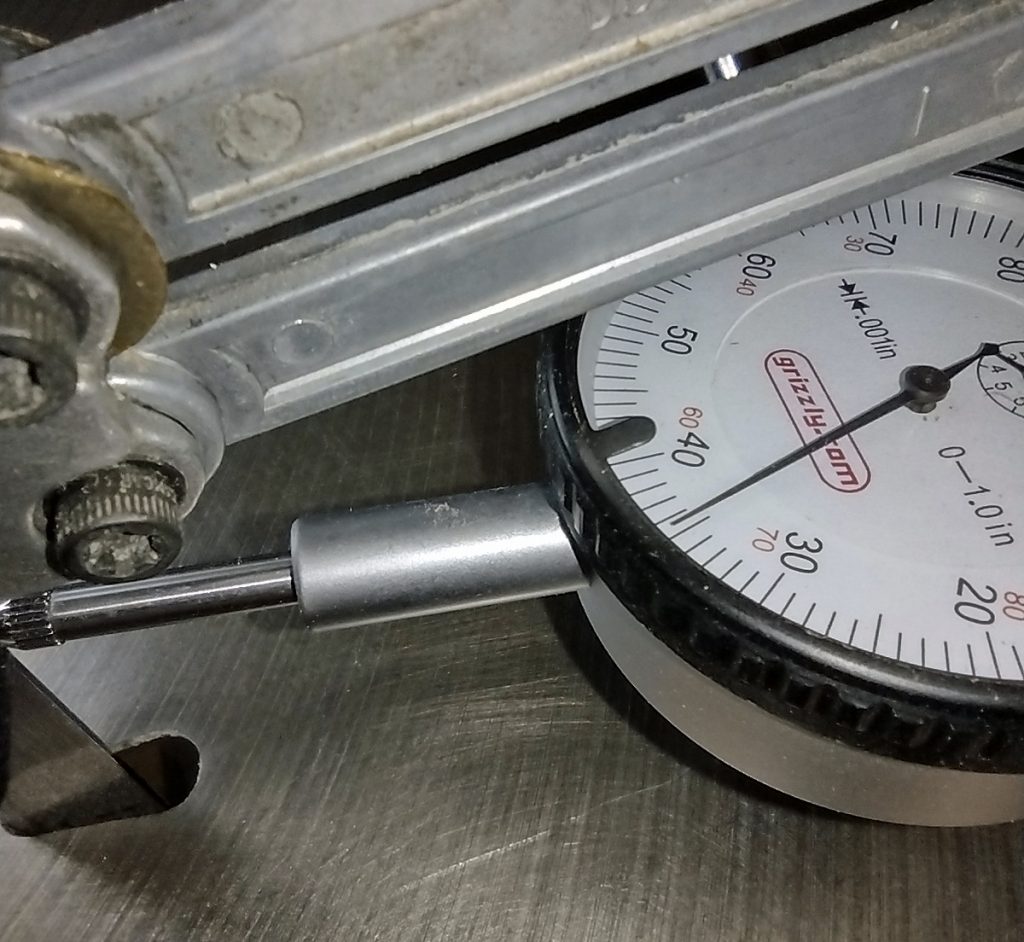
.036″ of an inch blade movement! Wow! That is basically double the theoretical .018″ I previously calculated. That calculation was based on the assumption that the arc motion of the blade started out at 0 degrees deflection and was split evenly up and down from that point. It turns out that is the best-case scenario. What if the blade starts out at 0 degrees deflection and the entire movement is either up or down? Time to get out the calculator again.
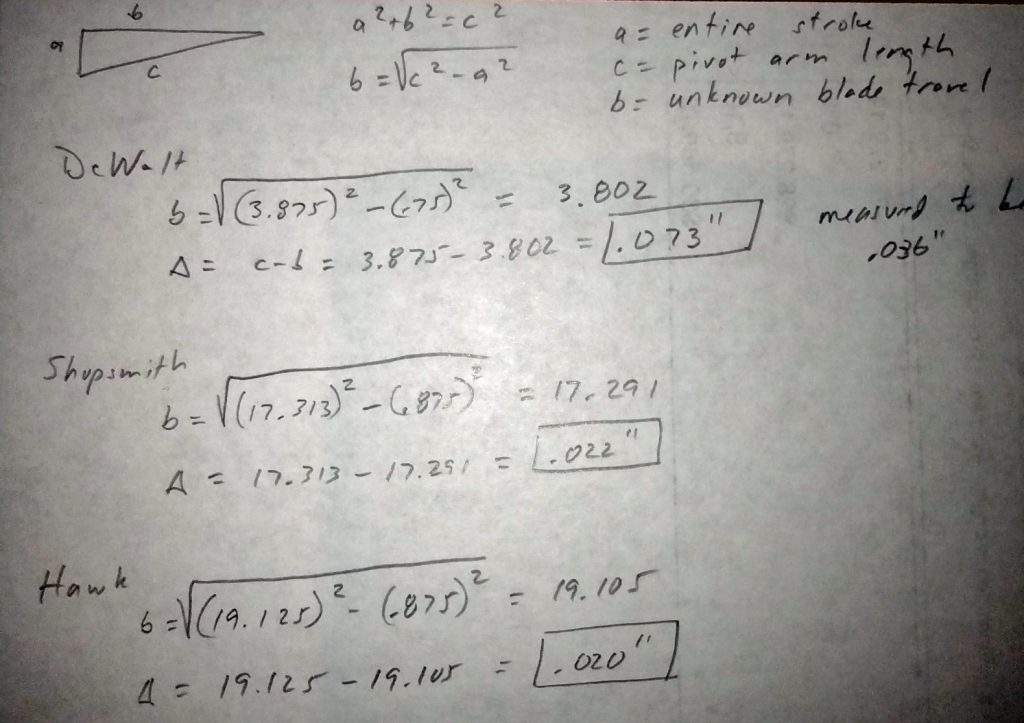
Now, using my previous calculations, we have a range of back-and-forth motion of the blade from best case to worst case.
DeWalt is from .018″ to .073″. Mine measured at .036″.
Hawk G426 is from .005″ to .020″. Mine measured at .009″.
Shopsmith is from .006″ to .022″. Did not get measured.
You can see the best-case scenario for the DeWalt is basically equivalent to the worst-case scenario for either the Hawk or the Shopsmith.
In the previously referenced video by Steve Good, at about time mark 3:21, he discusses adjusting the motor on the Seyco saw to minimize this movement. He mentions that the adjustment raises the upper arm (or conversely, lowers it). At about time mark 4:27, he comments that the Type 1 DeWalt’s seemed to have better manufacturing tolerances than the Type 2 DeWalt’s and generally have less blade motion. I have no personal experience with this, so take it for what it is worth.
In this other video, Steve Good reviews a pre-production version of the Pegas scroll saw. At about time mark 6:31, he starts discussing adjustment of the fore to back blade movement on that brand of saw. Notice there are two different adjustments that can be made.
I do not have an adjustable version of these saws. However, it appears to me the adjustment just allows you to move from the high end of the range to the low end of the range. The geometry of the movement of the short arms of the double parallel link system is still going to result in more blade movement than the longer arms of a parallel arm scroll saw.
Does this mean one is better than the other? No, not at all. It depends on what you are looking for and at what cost. The DeWalt is a great saw and I have been using mine for years and been happy with it. Now that I know about the issue, though, it is probably going to bug me! I wish I could adjust it down to the lower end of the range. For the most part, the DeWalt may remain my go-to saw for most of my puzzle cutting. The blade changes are faster, and it cuts faster because it cuts more aggressively. However, for some pieces, the Hawk will be the go-to saw. The Dragon Tail pieces are much easier to cut on the Hawk. My frog signature piece can be challenging to cut with the DeWalt blade jumping around like it does. For example, look at the picture below:
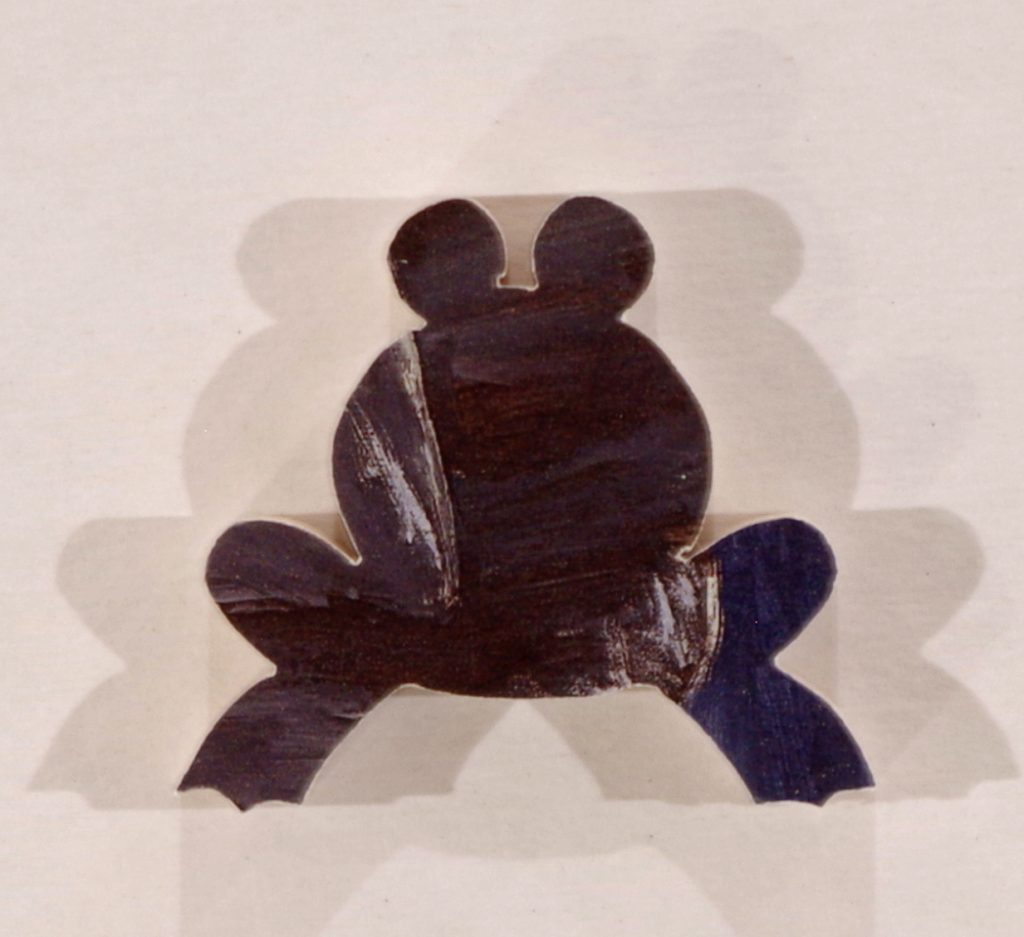
If you look at the right leg where it meets the body, that gouge is from the blade jumping back and forth as I spin the wood around the blade, trying to get a nice clean point. Compare that to the picture below, which is almost perfect.
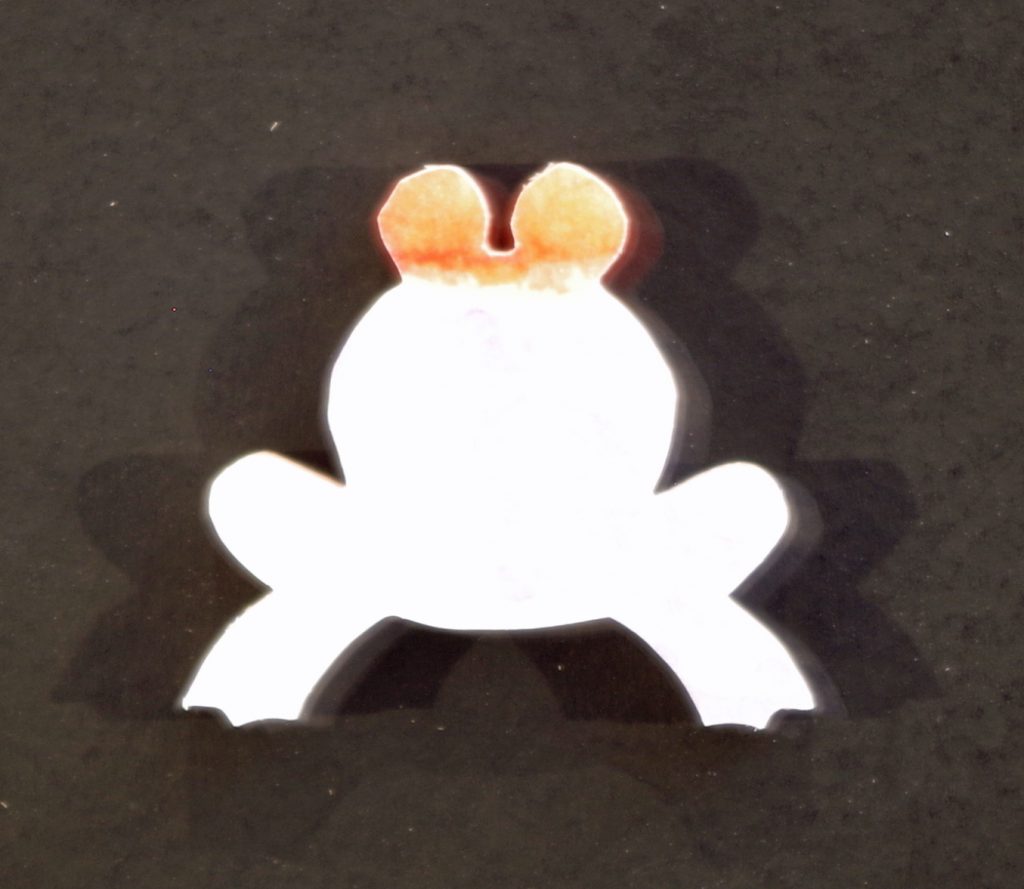
This was also cut on the DeWalt, but the blade speed was dialed waaay down to give me more time to spin the wood.
Once I figure out how to resolve the MGT reverse tooth blade issue on the Hawk, it may become my preferred saw. All three of these saws are perfectly fine saws for cutting. Each fulfills a different need. I have a pickup truck for hauling loads, a Tahoe for hauling people, and a convertible sporty car for hauling @$& and having fun! And, I have a DeWalt for fast simple cutting and a Hawk for very detailed cutting!
At the time of this writing, there is one Dragon Tails puzzle listed on Etsy. This puzzle was cut in the testing of the three saws. FiveFrogsWoodworking – Etsy
Happy Puzzling!
Bob
